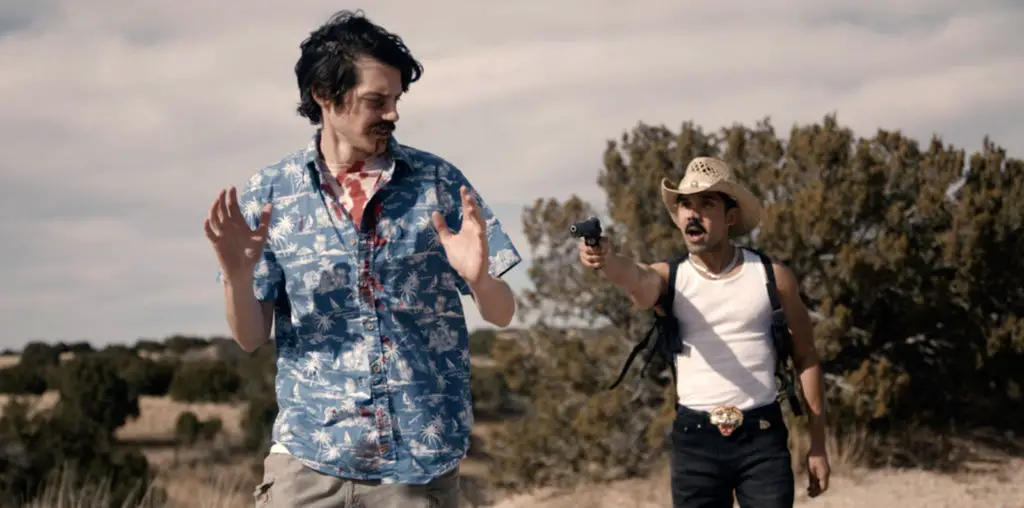
BOOTLEG FILES 349: “Women in Chains” (1972 made-for-television film starring Ida Lupino and Lois Nettleton).
LAST SEEN: We cannot confirm the last public exhibition of this film.
AMERICAN HOME VIDEO: None.
REASON FOR BOOTLEG STATUS: It has not been available for commercial release in home entertainment channels.
CHANCES OF SEEING A COMMERCIAL DVD RELEASE: Let’s hope not!
During the early 1970s, there was a strange eruption of B-grade films focusing on women in prison. Perhaps this was done in response to the women’s liberation movement of the era, or maybe the late 1960s’ collapse of the final vestiges of film censorship enabled a new “anything goes” attitude that sparked the creation of misogynist exploitation flicks. For whatever reason, the screens of the American grindhouses and drive-ins were full of beautiful and athletic women fighting against the humiliations and threats of the penal system.
The small screen world also joined the fun. Although the 1972 made-for-television production “Women in Chains” was unable to go the same distances as its big screen sisters when it came to graphic sex and bloody violence, it managed to keep pace in regard to meeting its quotient of inane camp.
Crusading parole officer Sandra Parker discovers that one of her lady parolees died from mysterious injuries after the rough lass was returned to the prison ward run by the notorious Claire Tyson. Unwilling to accept the official medical report that the hapless parolee’s multiple head injuries were the result of a single fall, plucky Sandra decides to get the goods on the evil prison matron Tyson.
It seems that Sandra may have been watching too many reruns of Samuel Fuller’s “Shock Corridor” when she was plotting her strategy. As part of her plan, Sandra would go undercover as a prisoner and investigate Tyson from the inside of her prison. Since her superiors would never approve this assignment, Sandra coerces a fellow parole officer to forge the necessary paperwork required to put Sandra behind bars. The scheme would run two weeks, at which point Sandra’s colleague would bring about her release. As for the obvious problem that some of the prisoners might recognize Sandra from her day job, it appears that all is well – Sandra did her homework and determined that none of her former parolees were anywhere near the Tyson prison block.
Taking on the name of Sally Porter and dying her brunette locks into a luscious blonde hairdo, Sandra gets transported to the big house (or in the case of this low-budget production, the medium-sized house). Upon arrival, Sandra/Sally has the good fortune to share a spacious jail cell with a cast of lady cons culled from Central Casting: the gruff but tender-hearted old lady, the mute weirdo, the sniveling youngster who is afraid of this tough new setting, the soulful African American (complete with a harmonica for appropriate blues tunes) and a pair attractive ladies who appear to share a Sapphic relationship. The latter duo wears unusually sophisticated hairstyles and make-up, which gives the impression that there’s an Elizabeth Arden salon on the prison grounds.
Sandra/Sally quickly gets what they need, but two itty-bitty problems arise. First, the one person who knew of her scheme (that fellow parole officer who forged the papers) gets killed in a shootout. Second, one of the prisoners recognizes Sandra – and word gets back to Tyson. Rut-roh!
“Women in Chains” is a film that is best viewed with your thumb firmly pressed on a fast-forward button. The production is utterly ridiculous, even by the non-standards of the tacky 1970s, and the whole sorry mess is barely acceptable thanks to some highly unlikely casting choices.
Ida Lupino was hired to play the role of the sadistic prison matron. Three decades before this slop, Lupino was among the top-ranked female stars in Hollywood. In the 1950s, Lupino was the only female director working in Hollywood. By the time “Women in Chains” came along, however, she was pushing 60 and was only able to snag roles in TV films and crummy horror flicks. Throughout the film, she played her role with the indifferent air of a bored society matron who was reluctantly cajoled to play dress-up in an amateur film.
As the crusading parole officer, faded starlet Lois Nettleton was brought in. Nettleton was a ubiquitous presence in episodic TV dramas through the late 1950s and early 1960s, but her occasionally attempts to reach out for big screen stardom never amounted to much. (When you see her amateurish performance, you’ll understand why.) The film’s climax has the two women in a brawl, but the scene’s cutaway shots are so inept that it looks like male stuntmen in drag were used for intensely physical aspects of their fisticuffs.
Jessica Walter was also hired as one of the lesbian ladies in Sandra/Sally’s cell. She has relatively little to do in the film, but at least she looks chic. One year earlier, Walter starred opposite Clint Eastwood in “Play Misty for Me” – yeah, what a difference a year makes!
“Women in Chains” was directed by Bernard L. Kowalski, a veteran of endless TV episodes and the man behind the notorious 1969 big budget stinker “Krakatoa: East of Java.” ABC put the film on the air in January 1972, and it later turned up in European theatrical playdates. No one was impressed – but, hey, the audience for this type of film isn’t exactly demanding cerebral provocation.
Paramount Pictures produced “Women in Chains” (the studio also produced “The Godfather” at the same time!). But Paramount never put the film into commercial home entertainment release. For years, this title has been a staple of bootleg video providers – clearly the triple threat of women in prison, 1970s TV films and Ida Lupino has made this a much-sought-after title. “Women in Chains” may turn up on DVD some day – but, quite frankly, anyone caught selling this crap should be arrested!
IMPORTANT NOTICE: The unauthorized duplication and distribution of copyright-protected material, either for crass commercial purposes or profit-free s***s and giggles, is not something that the entertainment industry appreciates. On occasion, law enforcement personnel boost their arrest quotas by collaring cheery cinephiles engaged in such activities. So if you are going to copy and distribute bootleg videos and DVDs, a word to the wise: don’t get caught. Oddly, the purchase and ownership of bootleg videos is perfectly legal. Go figure!

